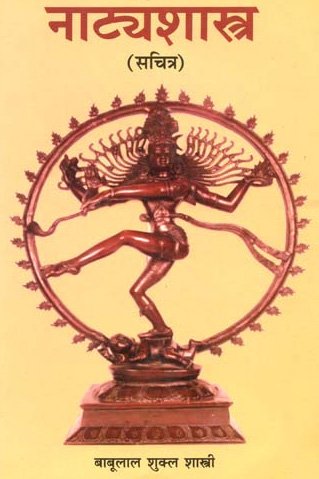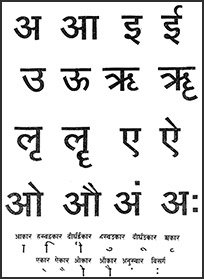Talavya, Tālavya: 13 definitions
Introduction:
Talavya means something in Hinduism, Sanskrit, Marathi, Hindi. If you want to know the exact meaning, history, etymology or English translation of this term then check out the descriptions on this page. Add your comment or reference to a book if you want to contribute to this summary article.
Alternative spellings of this word include Talavy.
In Hinduism
Natyashastra (theatrics and dramaturgy)
Source: Wisdom Library: Nāṭya-śāstraTālavya (तालव्य) refers to “palatal consonants” in Sanskrit grammar. It is a classification of consonants (vyañjana) according to the Nāṭyaśāstra chapter 15.

Natyashastra (नाट्यशास्त्र, nāṭyaśāstra) refers to both the ancient Indian tradition (shastra) of performing arts, (natya—theatrics, drama, dance, music), as well as the name of a Sanskrit work dealing with these subjects. It also teaches the rules for composing Dramatic plays (nataka), construction and performance of Theater, and Poetic works (kavya).
Vyakarana (Sanskrit grammar)
Source: Wikisource: A dictionary of Sanskrit grammarTālavya (तालव्य).—lit. produced from तालु (tālu) the part below the tongue; the vowel इ, चवर्ग, य (i, cavarga, ya) and श् (ś) are called तालव्य (tālavya), palatal letters; cf. इचशेयास्तालौ (icaśeyāstālau) V.Pr. I. 66. These letters are formed upon the palate by the middle part of the tongue; cf. R.Pr. 1.42, R.Pr. II.36.

Vyakarana (व्याकरण, vyākaraṇa) refers to Sanskrit grammar and represents one of the six additional sciences (vedanga) to be studied along with the Vedas. Vyakarana concerns itself with the rules of Sanskrit grammar and linguistic analysis in order to establish the correct context of words and sentences.
Shiksha (linguistics: phonetics, phonology etc.)
Source: Knowledge Traditions & Practices of India: Language and Grammar (shiksha)Tālavya (तालव्य, “palatal”) refers to one of the five places of articulation (uccāraṇa).—According to Indian linguistic tradition (viz., śikṣā, ‘phonetics’, vyakaraṇa, ‘grammar’, nirukta, etymology’ and chandas, ‘prosody’.), the places of articulation (passive) are classified as five. They are, for example, tālavya.
Shiksha (शिक्षा, śikṣā) deals with Sanskrit linguistics and represents a branch of vedanga (vedic ancillary science). Shiksha deals with subjects such as phonetics, phonology, study of sound, letters of the Sanskrit alphabet and related topics. Much attention is also given to the study of recitation (patha) of Vedic verses.
Languages of India and abroad
Marathi-English dictionary
Source: DDSA: The Molesworth Marathi and English Dictionarytālavya (तालव्य).—a (S) Palatal, uttered by aid of the palate.
Source: DDSA: The Aryabhusan school dictionary, Marathi-Englishtālavya (तालव्य).—a Palatal.
Marathi is an Indo-European language having over 70 million native speakers people in (predominantly) Maharashtra India. Marathi, like many other Indo-Aryan languages, evolved from early forms of Prakrit, which itself is a subset of Sanskrit, one of the most ancient languages of the world.
Sanskrit dictionary
Source: DDSA: The practical Sanskrit-English dictionaryTālavya (तालव्य).—a. Relating to the palate, palatal.
Source: Cologne Digital Sanskrit Dictionaries: Cappeller Sanskrit-English DictionaryTālavya (तालव्य).—[adjective] palatal.
Source: Cologne Digital Sanskrit Dictionaries: Monier-Williams Sanskrit-English Dictionary1) Tālavya (तालव्य):—a See lu below.
2) [from tālu] b mfn. (cf. [Pāṇini 5-1, 6]) relating to the palate, [Suśruta iii, 8, 15]
3) [v.s. ...] palatal (the letters i, e and ai [called kaṇṭha-t, ‘belonging to throat and palate’ [Śikṣā]], c, ch, j, jh, ñ, y, ś), [Śikṣā; Ṛgveda-prātiśākhya; Vājasaneyi-saṃhitā-prātiśākhya]
[Sanskrit to German]
Sanskrit, also spelled संस्कृतम् (saṃskṛtam), is an ancient language of India commonly seen as the grandmother of the Indo-European language family (even English!). Closely allied with Prakrit and Pali, Sanskrit is more exhaustive in both grammar and terms and has the most extensive collection of literature in the world, greatly surpassing its sister-languages Greek and Latin.
Hindi dictionary
Source: DDSA: A practical Hindi-English dictionaryTālavya (तालव्य) [Also spelled talavy]:—(a) palatal (sound etc.).
...
Kannada-English dictionary
Source: Alar: Kannada-English corpusTālavya (ತಾಲವ್ಯ):—
1) [adjective] of the palate.
2) [adjective] (said of phonetic sounds) a) articulated with the part of the tongue just behind the tip raised against or near the hard palate, as the consonants (as ಇ, ಈ, ಚ, ಛ, ಜ, ಝ [i, i, ca, cha, ja, jha] etc.); palatal.
--- OR ---
Tālavya (ತಾಲವ್ಯ):—[noun] any phonetic sound (as ಇ, ಈ, ಚ, ಛ, ಜ, ಝ [i, i, ca, cha, ja, jha] etc.) articulated with the part of the tongue just behind the tip raised against or near the hard palate.
Kannada is a Dravidian language (as opposed to the Indo-European language family) mainly spoken in the southwestern region of India.
Nepali dictionary
Source: unoes: Nepali-English DictionaryTālavya (तालव्य):—adj. Phonol. palatal; articulated from the palate;
Nepali is the primary language of the Nepalese people counting almost 20 million native speakers. The country of Nepal is situated in the Himalaya mountain range to the north of India.
See also (Relevant definitions)
Starts with: Talavyasvara, Talavyavarna.
Ends with: Atalavya, Hatalavya, Kanthatalavya.
Full-text: Talvya, Talavy, Talavviyam, Talavyasvara, Talavyavarna, Bhra.
Relevant text
Search found 3 books and stories containing Talavya, Tālavya; (plurals include: Talavyas, Tālavyas). You can also click to the full overview containing English textual excerpts. Below are direct links for the most relevant articles:
Amarakoshodghatana of Kshirasvamin (study) (by A. Yamuna Devi)
Daily Life (2): Dress and Ornaments < [Chapter 3 - Social Aspects]
Mudrarakshasa (literary study) (by Antara Chakravarty)
5. Pravṛtti (traditions according to time and place) < [Chapter 5 - Adoption of Style and Language in Mudrārākṣasa]
Natyashastra (English) (by Bharata-muni)